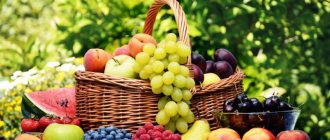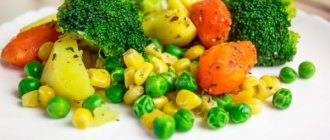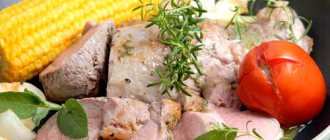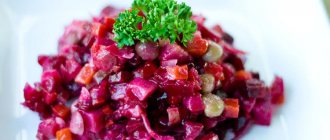Nutrients in vegetables and fruits dictate their color
Products in this group contain useful phytochemical elements, such as the already known anthocyanins (blueberries, dark grapes, black currants) and phenols (eggplant, plum, raisins).
These powerful antioxidants help reduce the risk of certain types of cancer, heart disease, Alzheimer's disease, and slow down the aging process. Dark cabbage, blueberries, blackberries, eggplant, figs, dark grapes, dried plums, raisins.
https://www.youtube.com/watch?v=ytcopyrightru
Plant compounds contained in fruits, leaves, roots and other parts of vegetables and fruits give it one or another color. The color of vegetables and fruits shows us exactly what health-promoting substances are present in them. Moreover, the maximum concentration of nutrients (vitamins, minerals, antioxidants) is often found in the edible skin of fruits and vegetables - remember this and do not rush to peel it off.
Green vegetables and fruits contain calcium and other important vitamins, as well as the plant compounds lutein and indole, which help strengthen vision, bones and teeth, and reduce the risk of certain types of cancer. The green group of vegetables and fruits includes: kiwi, avocado, lime, artichoke, green asparagus, green cabbage (broccoli, Brussels sprouts, Savoy, Celtic, etc.
Recipes with green vegetables and fruits
- Fresh green salad. How to make it delicious
- Broccoli soup. Delicious, simple and fast
- Basil. Pesto
- Five-minute rhubarb jam
- Apples in caramel
- Apple sorbet with Calvados Normandy style. Recipe
- Steamed green kale
- Sprouts and sprouts: food of life
A group of red and burgundy vegetables and fruits contain plant compounds lycopene and anthocyanin, which promote cardiovascular health, urinary tract health, good memory and reduce the risk of breast and prostate cancer. The red group includes: cherries and cherries, cranberries, rose hips, red currants, pomegranates, raspberries, wild strawberries and strawberries, beets, radishes, watermelon, red leaf lettuces and chicory, tomatoes, red sweet peppers and hot chili peppers, red onions and potatoes with red skin, rowan and other berries, red apples and citrus fruits, etc.
Recipes with red and burgundy vegetables and fruits
The yellow and orange group of vegetables and fruits contains a number of useful substances: vitamins A and C, carotenoids, phenolics and bioflavonoids. Yellow and orange vegetables and fruits help support heart function, vision, the immune system and reduce the risk of certain cancers.
The group of yellow and orange vegetables and fruits includes: apricots, peaches, mangoes, nectarines, papaya, persimmons, sea buckthorn, pineapple, pumpkin, corn, sweet potatoes (yams), yellow turnips, carrots, yellow and orange citrus fruits, yellow apples, yellow and orange melons, bell peppers and other yellow and orange fruits and vegetables.
Recipes with yellow and orange vegetables and fruits
Vegetables and fruits from the purple group contain plant compounds anthocyanins and phenolics, which help maintain urinary tract health, memory and brain function, reduce stress levels and reduce the risk of developing certain types of cancer. Vegetables and fruits of the purple group include: black currants, blueberries, blueberries, blackberries, chokeberries, dark grapes, dark plums, “blue” cabbages, eggplants, purple and black peppers, dark (ripe) olives and other vegetables and fruits.
Recipes with purple vegetables and fruits
Green vegetables
Green is the most “familiar” and common color when it comes to plants. The main “responsible” for the green color in plants is the pigment chlorophyll, the main role of which, however, is not at all in the color of stems, leaves and fruits, but in ensuring the complex chemical process of photosynthesis, the conversion of light energy into the energy of chemical bonds of organic substances.
Recently, among adherents of a healthy lifestyle, it has become fashionable to use drugs with chlorophyll as a miraculous food supplement, which supposedly helps against many diseases, from gastrointestinal problems to oncology. It is important to understand that such products, although harmless and approved for use all over the world, have no proven effectiveness.
There are literally single species of higher plants that do not contain chlorophyll, for example, Peter's cross, which at first develops underground without sunlight, and later parasitizes on the roots of trees.
There are also proven beneficial compounds that green leafy vegetables are rich in - for example, folic acid, which, like vitamin B9, is necessary for the body for the growth and development of the circulatory and immune systems.
So the main value of green vegetables and fruits is the same as all other plant products - fiber, vitamins, minerals.
What crops to plant : different types of cabbage, cucumbers, peas, zucchini, vegetable and hot peppers, celery, artichokes, greens.
Red group of vegetables and fruits
These foods contain phytonutrients such as lycopene and anthocyanins, natural pigments that give fruits and vegetables their red color. Lycopene (found in tomatoes, grapefruit and watermelon) helps fight signs of aging and certain types of cancer (especially prostate cancer).
Tomato products—such as pasteurized tomato juice, sauce, soup, and even ketchup—contain a special type of lycopene that is easily absorbed by the body. This type of lycopene is fat-soluble, so the tomato dish should be served with a little oil because the nutrients will be absorbed better.
Anthocyanins (found in strawberries, red grapes, raspberries, cherries and red apples) are excellent antioxidants that protect cells from destruction. They also help keep blood pressure under control and reduce the risk of heart disease. Recent research has shown that the anthocyanins contained in cherries have an anti-inflammatory effect and may therefore help those suffering from gout and arthritis.
https://www.youtube.com/watch?v=ytaboutru
Tomatoes, cranberries, cherries, red grapes, raspberries, red pears, watermelon, pink grapefruit, strawberries, pomegranates and other products.
Therapeutic, preventive and beneficial properties of red vegetables
Anthocyanins:
- prevent the development of cancerous tumors,
- protect against aging,
- strengthen memory,
- improve vision,
- help fight stress,
- have a beneficial effect on the functioning of the heart,
- protect the body from infections,
- have a positive effect on the condition of the skin.
Red cabbage, beets, radishes, red onions, eggplants, red beans, and red potatoes are especially rich in antioxidants.
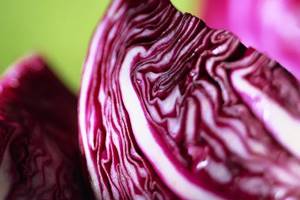
Red vegetables are the main suppliers of lycopene. This carotenoid pigment slows down the development of sclerosis, regulates the functioning of the heart muscle, strengthens the walls of blood vessels, helps with cataracts, normalizes blood pressure, and reduces the risk of developing certain types of cancer (in particular, lung, stomach and prostate cancer).
The leaders among vegetables in terms of lycopene content are tomatoes.
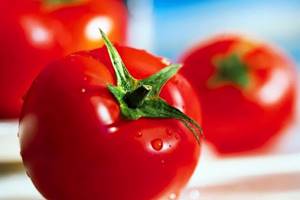
The value of red vegetables is also given by the beta-carotene they contain, which also belongs to the group of carotenoids. This substance:
- stimulates the immune system,
- reduces the likelihood of cancer,
- useful for the organs of vision,
- improves reproductive function,
- suppresses early aging processes,
- normalizes the functioning of the cardiovascular system,
- indicated for acne and age spots on the skin.
Beta-carotene is hidden in carrots, pumpkin, tomatoes, red peppers, and red cabbage.
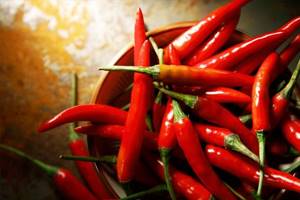
Raw vegetables are an excellent source of pectin. Why do we need it? To bind harmful substances and subsequently remove them from the body.
If you regularly include various red vegetables in your menu, the risk of accumulation of pesticides, radionuclides and other heavy metal ions is practically eliminated.
Pectin is useful for metabolic disorders (diabetes, obesity), diseases of the gastrointestinal tract, problems with the liver and pancreas. Helps reduce cholesterol levels.
The main plant suppliers of pectin are beets and pumpkin.
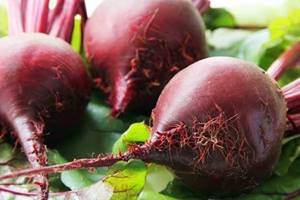
Red group of vegetables and fruits
Nutritional value. The reason for the green color of fruits and vegetables is the pigment chlorophyll. But besides it, lutein is found in green vegetables such as peas or spinach and ziazanthin (yellow carotenoids) is found in peas, spinach and other green leafy vegetables. These elements work together to improve your vision, reduce your risk of cataracts, and slow down age-related vision loss.
Another phytochemical, indoles, is present in cabbage, broccoli and other cruciferous vegetables and may protect against certain types of cancer. Leafy green vegetables (such as spinach and broccoli) are also low in calories, rich in nutrients, and an excellent source of potassium, magnesium and folate (a B vitamin that reduces the risk of birth complications).
Spinach, broccoli, avocado, green peas, green beans, green peppers, asparagus, green cabbage, cucumber, zucchini, etc.
Products in this group contain several important phytonutrients, such as beta-carotene, potassium and vitamin C.
Beta-carotene (carrots, mango, papaya, pumpkin) is a powerful antioxidant that is beneficial not only for vision, but also improves mental processes and protects the skin from the harmful effects of ultraviolet radiation. Beta-carotene is transformed into vitamin A, which improves vision in the dark and makes our immunity stronger.
Citrus fruits are an excellent source of vitamin C, an antioxidant that strengthens the body's defense system, protects against cardiovascular disease, and also produces collagen in the skin. Vitamin C is also necessary for the proper absorption of iron by the body.
Yellow fruits are also rich in potassium, which helps prevent heart attacks and strokes.
Oranges, carrots, melon, mango, pumpkin, potatoes, yellow grapes, lemon, peaches, papaya, pineapple, etc.
Red fruits and vegetables can not only decorate the holiday table with their bright appearance, but also benefit our body. How does the color red affect the condition of our body?
It is believed that the healthiest of all the variety of fruits and vegetables are those that are red in color. They are the ones who can saturate our body with essential antioxidants and various vitamins.
Beneficial properties of red vegetables and fruits
1. Red pepper This red product can be found on supermarket shelves all year round. An interesting fact is that red peppers contain much more vitamin A than green peppers. In addition, it contains much more vitamin C than lemon, so it should especially be consumed in winter to boost immunity. Red pepper can be added to salads, made into vegetable stews, baked with other vegetables, and also made into preparations. To do this, just pass it through a meat grinder, add salt, close the lid and put it in the refrigerator. If necessary, add to soups and other dishes.
2. Beetroot Beetroot is a national Ukrainian vegetable. No borscht can do without this product. In addition, beets are very beneficial for our body. If you introduce it into your diet, digestion will noticeably improve, and the juice of this product helps with colds. The benefit of this red vegetable is also that it stimulates the functioning of the liver and gallbladder.
3. Rosehip Rosehip is a real record holder for vitamin C content. It is recommended to drink tea from it in the summer as an escape from thirst and in the winter to prevent colds. In addition, vitamin C gives strength, energy and a good mood for the whole day. Making tea is very easy. It is enough to chop the rose hips, you need to take 2 tablespoons and pour 1 glass of boiling water, let it brew for 10 minutes, strain and you can drink. This drink should not be boiled so as not to destroy vitamin C.
4. Pomegranate This red product is a real storehouse of vitamins and microelements. Its juice contains more antioxidants than green tea. It increases hemoglobin levels, so it should be in the daily diet of those people who have anemia. In addition, pomegranate can improve digestion and will be useful even for pregnant women.
5. Grapefruit Everyone knows that this citrus is included in many diets, as it can help you lose excess weight. And if you use it before bed, you will get rid of insomnia. In addition, this red fruit is useful because it strengthens the nervous system, relieves bad mood and obsessive feelings of anxiety.
It is recommended to start the morning with fresh juice. Firstly, it will be an excellent coffee substitute, and secondly, it will start the digestion process.
If you have no contraindications, eat these healthy red fruits and vegetables in winter and always be healthy!
Source

